Tile with stone
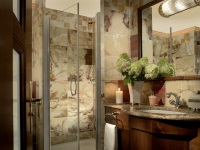
Natural stone has always been very appreciated as a finishing material, thanks to its unsurpassed strength, durability, great appearance. But not everyone can afford to decorate with natural stone tiles, but it can make the interior with the materials, stylized "under the stone".
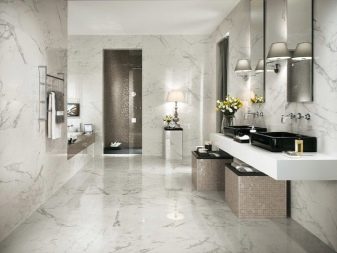
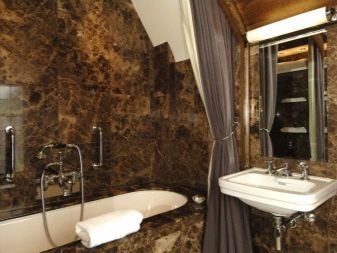
Tile "under the stone" is used to decorate the floor or ceiling coating, but most often it is used for wall cladding.
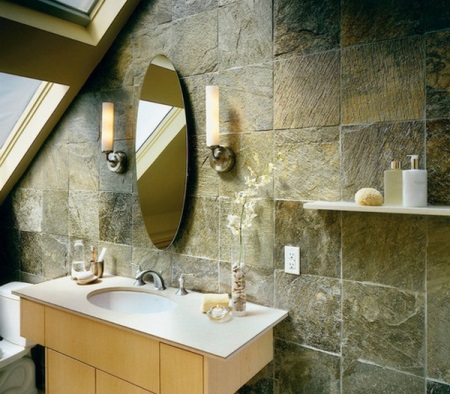
Advantages and disadvantages
Like any other finishing material, the tile "under the stone" has its own advantages and disadvantages before other materials.
Among the advantages of such tiles can be noted:
- Affordable cost. Compared with natural or artificial stone, tile "under a stone" is much more affordable.
- Excellent resistance to sunlight, high humidity, mechanical shocks, chemical reagents. According to all these indicators tile is practically inferior to natural material.
- Low weight. It all depends on the material from which the tile is made. But in any case, its weight will be much lower than the weight of natural stone.
- A wide assortment, a wide range of colors, a variety of textures.
- The possibility of decorating a small part of the interior. Tiles in this respect is much more convenient than other materials for repairs. It can cover a wall or a fragment of a wall, arrange small accents, etc.
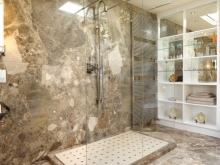
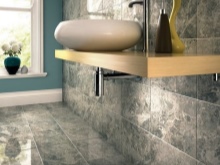
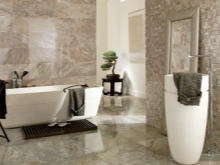
Disadvantages of tiles:
- More complicated installation, or rather cutting tiles. Smooth tile is cut much faster and easier than stone tiles. In addition, cutting requires a special tool.
- Tiled wall is an uneven rough surface with wide intertile seams, so the proximity to all kinds of decorative trifles is practically excluded.
- Stone is a cold material, so it is best suited not for decorating living rooms (bedroom, living room, children's room), but for cladding the kitchen, hallway, bathroom, etc.
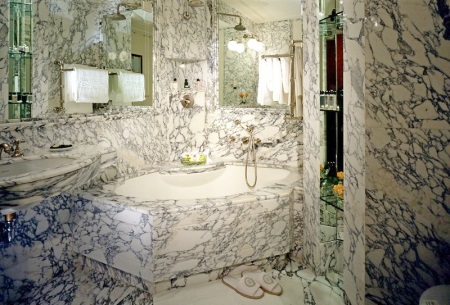
Types of decorative tiles
Decorative tiles "under the stone" is made in different versions, depending on the design, location of its application, texture, color, size, etc.
Most often, tiles "under the stone" is used as a basement finish and it is not surprising. The part of the house, most often exposed to mechanical impact, must have a strong, durable and reliable finish. And stone is the most appropriate option for this.
Today, however, more and more often you can find tiles "under the stone", used for interior decoration. Relief, textured, heterogeneous, it is often used to decorate individual walls or entire rooms. It is often used as a contrast to the smooth, even walls.
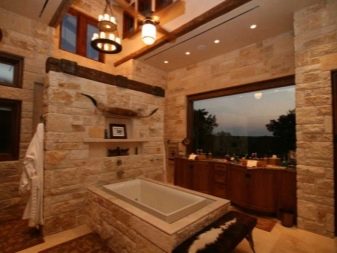
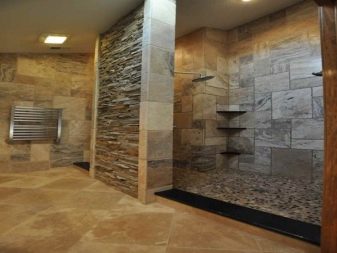
Facade tiles are used for decorating walls and plinths of residential and industrial buildings. It perfectly withstands seasonal temperature fluctuations, direct exposure to sunlight, rain, snow, moisture.
Decorative tile "wild stone" is ideal for those who like interiors designed in a "live", natural style. Such tiles perfectly imitate natural, untreated stone.
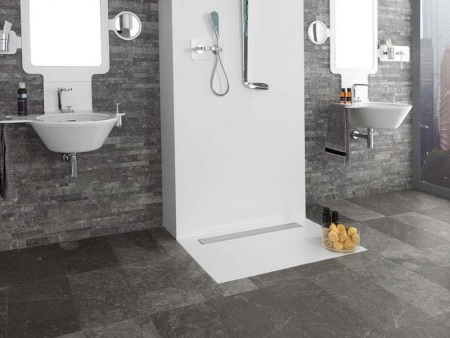
Very interesting and unusual looks interior, decorated with a tile under the "old stone". Tile is stylized as a stone that has lain for several years, partially changed its natural coloring, covered with cracks, chips, etc.
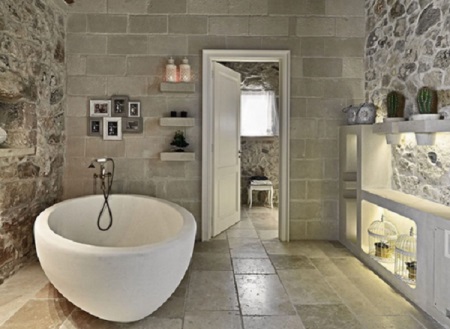
Uneven, lost a complete view, the so-called "jagged" stone, is most often used for exterior decoration of houses, for example, a basement.
One of the most original types of decorative tiles is the stylization of "rubble stone". By itself, this stone is a fragment of rocks of different sizes, weights and colors. The surface, faced with such tiles, looks very heterogeneous, relief and unusual.
For bathroom design, mosaic tiles are ideal. It perfectly imitates pebbles and small stones. Such tiles are suitable for both floor and wall tiling. Most often it is used in combination with smooth tiles, wall panels, wallpaper, etc.
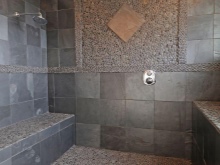
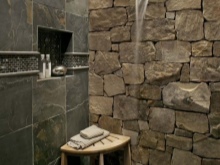
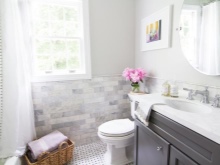
For realization of the most courageous design ideas flexible tile is perfect. It is just created for decoration of complex architectural forms and structures, columns, arches, etc. This material is most often used as a wall tile.
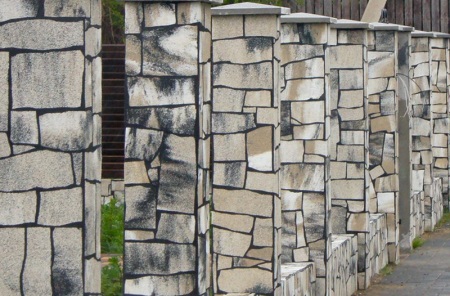
Material
Tiles "under the stone" can be natural and artificial.
Tiles made of natural stone has a high strength, it is very practical, durable and resistant to various kinds of influences. The tiles may be glossy or matte, have smooth or embossed surface, be convex, covered with glaze and so on. Tiles of marble, onyx, granite, basalt, sandstone, etc. are used for facing surfaces.
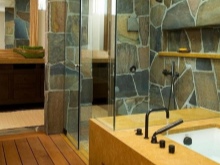
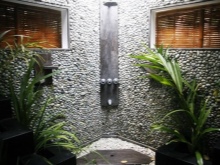
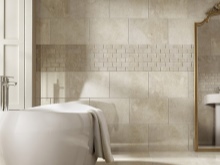
Decorative tile Is made of artificial conglomerate. Externally, it differs little from natural stone and has similar characteristics. An additional advantage is the huge range of shades and textures. Acrylic, synthetic material and natural stone crumbs such as marble, granite or onyx are used to make tiles.
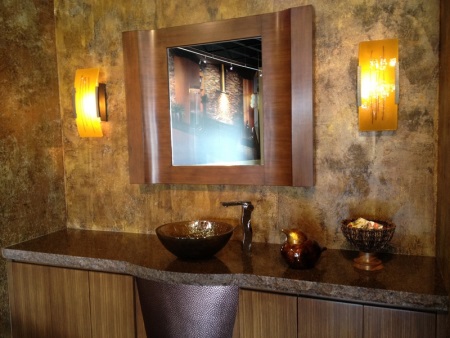
Ceramic tile - One of the most affordable options for interior design. Ceramic is strong and durable, practical in care and aesthetically pleasing. Tile can have a matte, glossy surface or be porous.

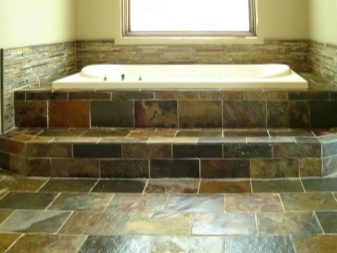
Gypsum tiles is often used to decorate arches, workrooms, corridors, dining rooms, fireplaces, etc. Due to its unique plastic texture, gypsum is much more natural in conveying the texture of natural stone compared to ceramics and other materials. The disadvantage of gypsum tiles is that they can only be used in dry rooms. And its merits include external appeal, high sound and heat insulation properties, low weight, safety for others, etc.
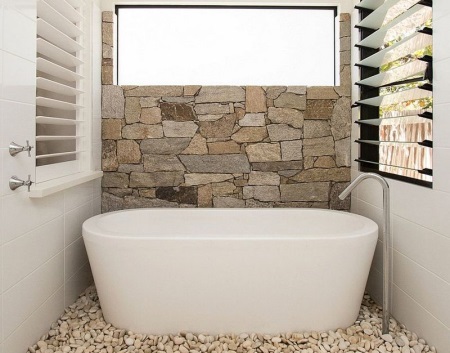
Porcelain tiles In the way of manufacture and appearance looks like an artificial stone, but on the strength and durability is not inferior to the natural material. Stoneware is available in square or rectangular blocks and is most often used for floor design.
PVC tile Mostly used for finishing flooring, it looks very similar to ordinary linoleum. Vinyl tiles are inexpensive, practical, quick and easy to install and do not require special maintenance. In addition, it is environmentally friendly, harmless to human health and has a high class of fire safety.
Plastic tiles Ideal for finishing bathrooms. It is unpretentious in care, easy to clean, comes in a wide range. The tiles don't crack, don't rot and look great.
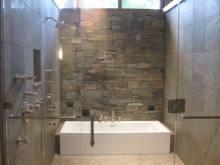
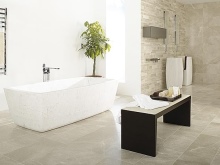
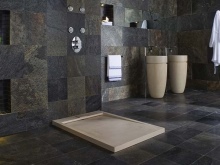
Color
Depending on what kind of stone is performed under the tiles and color solutions can be very different.

For example, the tile "under the marble" has a beige, black, white color with inclusions of gray shades. Imitation onyx is colored amber, green, pinkish. Sandstone, limestone, granite are painted in gray and beige tones.
If the tile is made under a precious or ornamental stone, such as malachite, its color can be deep green. And in general for such tiles are most often used natural, natural shades: brown, gray, white, black, reddish, etc.
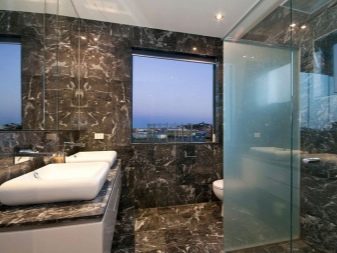
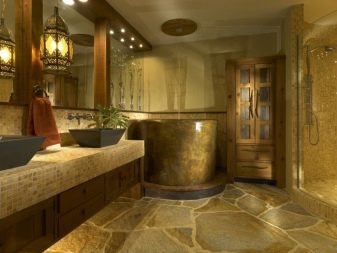
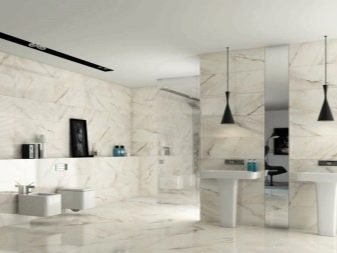
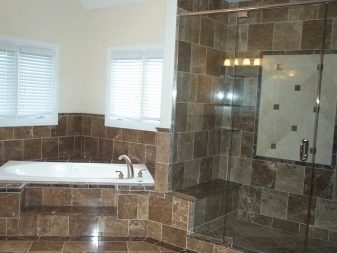
How to choose?
To choose a truly high-quality material, first of all, for it it is necessary to go to specialized construction stores. There you can always get comprehensive answers to questions about the composition, size, quality, method of laying, etc.
Depending on the conditions in which it is planned to use the tiles (street, apartment, room with high humidity), the best suitable material for this purpose is selected.
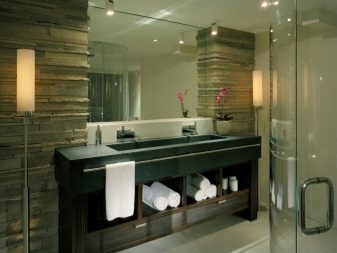
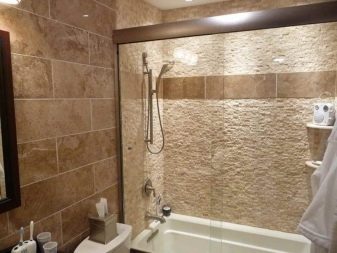
Tiles, which will be exposed to frequent mechanical action, must be as strong and hard as possible. This is porcelain stoneware, natural stone tiles, acrylic-based, etc.
Gypsum tiles "under the stone" will be suitable only for decorative design, and not for tiling large rooms.
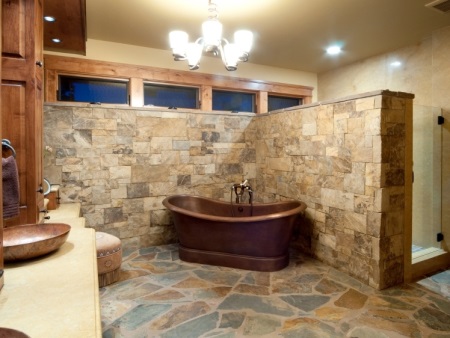
How to care for?
Despite its strength and durability, the tile, as well as other finishing material, needs careful care.
After finishing tiling work, it is recommended to thoroughly clean the surface from traces of cement or other mortar. It is strictly forbidden to use a knife for this purpose, so as not to break the surface of the tiles.
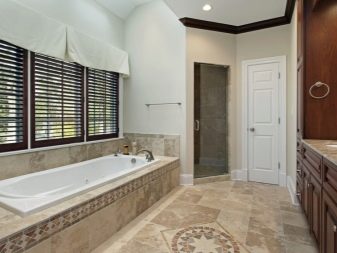
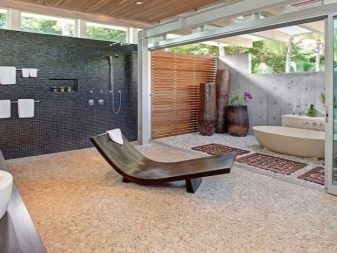
It is best to use soap (laundry soap or baby soap) as a permanent care product. The soap solution perfectly cleans the surface of dirt and dust without scratching or disturbing its appearance.
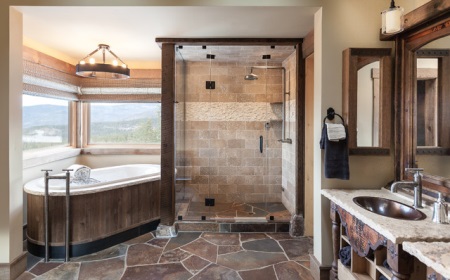
Paving with your own hands
The technology of laying tiles is quite simple and under the power of even a novice builder. All work begins with the preparatory stage. It is necessary to prepare the tiles, tools, adhesive composition, etc. For tiles imitating stone, a special adhesive is sold. If you plan to use undercut tiles, its edges should be carefully sanded to reduce the consumption of grout and improve the appearance of the finished coating.
Cleaning the walls. The surface should be cleaned of old finish, traces of rust, peeling plaster, brushed and sanded. Pre-applied grooves will improve the adhesion of the wall and tiles, and the primer will reduce adhesive consumption.
The tile installation starts at the bottom corner, one row at a time, going up the wall. The glue is applied to the wall and the tile, then the tile is pressed firmly against the wall for a few seconds. It is advisable to remove excess glue immediately before it dries.
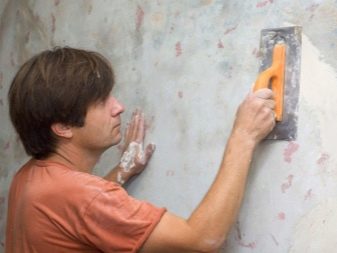
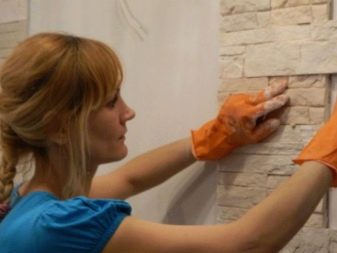
Grout for tiles "under the stone" is used special with added color pigments, so that the finished canvas looked like a solid and smooth stone coating.
After the glue and tile dry, finish cleaning is carried out, the remains of glue and grout are carefully removed.
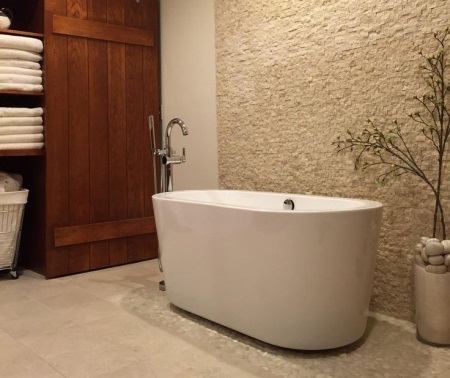
Options in the bathroom interior
Bathroom for a real man. A light color scheme, a clear geometry of lines, the absence of decoration and walls, decorated with "concrete" tiles, help to give the interior a purely masculine character.
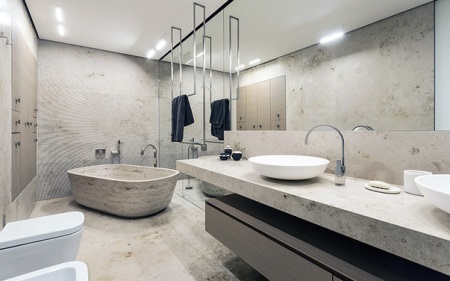
Finishing "under marble" does not make the bathroom too cold and soulless. It's all about the right color scheme. Wooden furniture, mirrors, glass, and the warm beige shade of tiles help create a modern, stylish and very cozy interior.
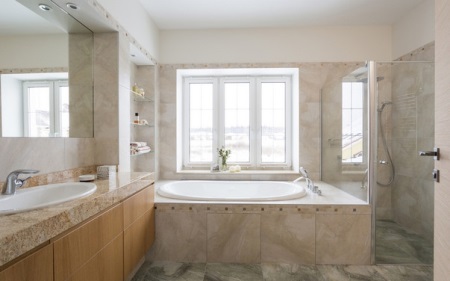
Stone is perfectly combined with wood. For example, in the interior of the bathroom, where the ceiling and one part of the walls are decorated with wooden slats, and the other part and the floor are decorated with stone. The combination of several shades of beige and milk color makes the bathroom more spacious and bright.





